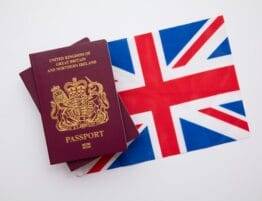
On 30th September 2022, the adjusted right-to-work checks, which came into force as a result of the COVID-19 pandemic response by the government, came to an end. In this article, we will explain what the ending of the temporary adjusted checks means for businesses, the process that must now be followed, how to perform digital ID checks and the use of identification document validation technology (IDVT).
How do I check if a worker has the right to work?
Under UK law, all employers are required to verify that a job applicant has the permission they need from the Home Office to work before employing them. This is to ensure accordance with the Immigration, Asylum and Nationality Act 2006, Immigration Act 1971, and the Immigration Act 2016. It is an offence to employ someone in the UK who does not have the necessary permission to work here. If you have carried out a check and it is later discovered that the individual is working illegally, you may have a statutory excuse against a civil penalty.
On 30th March 2020, during the COVID-19 pandemic, the government put in place a temporary adjusted right-to-work check arrangement that allowed employees to send scanned or photographed versions of documents proving their right to work to employers rather than providing originals. It was also possible for employers to carry out right-to-work checks by viewing the original in a video call with the candidate. As of 1st October 2022, employers must resume the full right-to-work check process by either carrying out a:
- A manual right-to-work check
- A right-to-work check by utilising Identity Document Validation Technology (IDVT) accessible through an identity service provider (IDSP)
- A Home Office online right-to-work check
Manual right-to-work check
A manual right-to-work check is undertaken by viewing the original version of an employee’s documents. Employers must:
- Obtain original documents that are included in List A or B of the Home Office’s acceptable documents
- Check that the documents provided are “genuine and that the person presenting them is the prospective or existing employee, the rightful holder and allowed to do the type of work you are offering”
- Copy each document
For more details on the complete manual right-to-work check process, speak to one of our immigration Solicitors, who can explain how to ensure your compliance.
Using Identity Document Validation Technology (IDVT)
IDVT can be used by any employer in the UK to check the identity of a prospective employee and the validity of their passport. This service is provided through identity service providers (IDSPs) and can only be used for employees with a British or Irish passport or an Irish passport card. A full list of service providers that are able to carry out a right-to-work check using IDVT is available online. Service providers include the Post Office, which has partnered with a company called Yoti.
Carrying out a Home Office online right-to-work check
The Home Office provides a step-by-step online right-to-work checking service. This enables employers to verify the types of roles the individual is permitted to do and how long they can work in the UK (if the worker is subject to a time limit). Before doing so, the employee must acquire their work visa and biometric permit and then request a ‘right to work share code’. To get a right-to-work share code, the employee simply needs to enter their biometric residence permit number, biometric residence card number, passport, or national identity card online. The employer then enters the share code and the worker’s date of birth to receive the right-to-work check information.
Garth Coates is a leading niche immigration firm based in the heart of London, specialising in all forms of personal and business immigration, including visas, global mobility, sponsorship and compliance, settlement, and citizenship. To discuss your sponsorship compliance requirements, please contact one of our friendly and knowledgeable immigration Solicitors on Tel: +44 (0)20 7799 1600 or by completing our online contact form.









